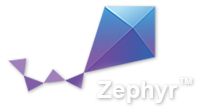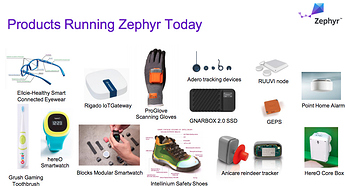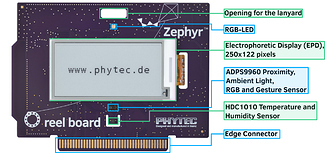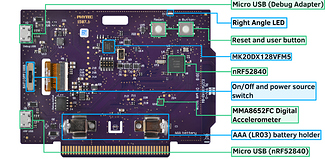
About
The Zephyr™ Project is a scalable real-time operating system (RTOS) supporting multiple hardware architectures, optimized for resource constrained devices, and built with safety and security in mind.
Summary
Tech
The Zephyr kernel is derived from Wind River’s commercial VxWorks Microkernel Profile for VxWorks. Microkernel Profile has evolved over 20 years from DSP RTOS technology known as Virtuoso. The RTOS has been used in several commercial applications including satellites, military command and control communications, radar, telecommunications and image processing. The most recent example of the technology’s success is the successful Philae Landing on Comet Churyumov–Gerasimenko and the accompanying Rosetta Orbiter.
Description
The Zephyr Project, a Linux Foundation hosted Collaboration Project, is an open source collaborative effort uniting leaders from across the industry to build a best-in-breed small, scalable, real-time operating system (RTOS) optimized for resource-constrained devices, across multiple architectures.
Goal
The Zephyr Project’s goal is to establish a neutral project where silicon vendors, OEMs, ODMs, ISVs, and OSVs can contribute technology to reduce the cost and accelerate time to market for developing the billions of devices that will make up the majority of the Internet of Things
The Zephyr Project strives to be the best-of-breed, open source RTOS for connected, resource-constrained devices, and built with security and safety in mind.
The Zephyr Project is working with leaders across the industry to create a solution that integrates and creates a robust, easy to use, customizable RTOS for a variety of industries and comprehends varying degrees of development needs. Zephyr Project and Linux Foundation will take strides in continuously expanding membership, building awareness to the project, and reinforce the open source development model through encouragement of community contributions.
Why create another RTOS?
Connected devices are the future, and development is happening quickly. The technology requirements are so vast that no one person or company has all the answers. Collaboration is key to share expertise and drive down the cost of connected devices which are projected to be deployed by the billions by 2020. A platform to promote collaboration has to be commercially-neutral, inclusive of all contributors, and governed in such a way that all interests are fairly represented. Today, only one such project exists, and that is Zephyr Project.
In the past few years the world has seen numerous “small-footprint” RTOSes. There are new RTOSes released by companies at an increasing rate, open source and otherwise, why create another? It may be more appropriate to ask, “Why does the industry need RTOS consolidation?” With this proliferation in RTOSes and small OSes we’ve come to notice a few things:
Market Fragmentation
- Several RTOS options for small devices, each with their own restrictions.
- Paid-for, commercial license or restrictive non-IP-friendly open source licenses
- Open source projects tailored to a single party’s goals
Other RTOSes are run by major stakeholders with promises of open source & collaboration
- No clear way to upstream code that better suits your product development model
- No community support ecosystem from professionals and experts.
- No clear leader


